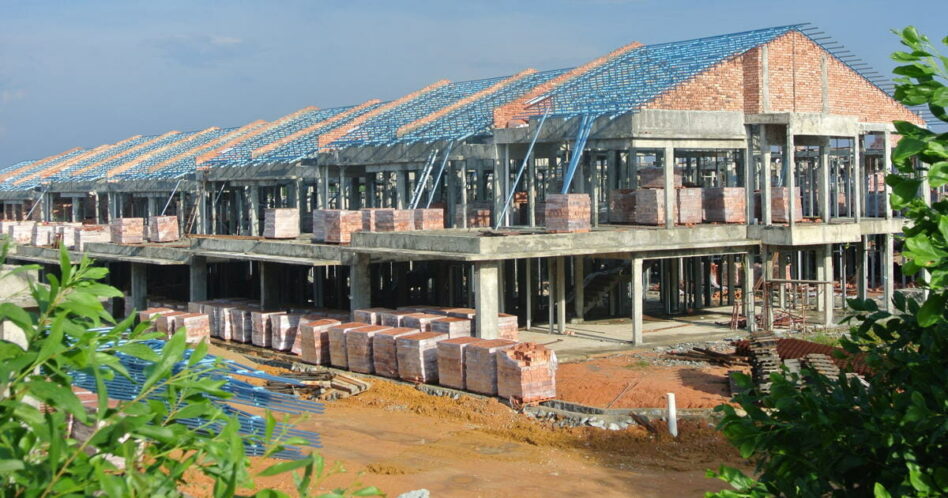By Lee Heng Guie
Global central banks have moved into a convergence of policy interest rates as they cut rates to provide insurance against ongoing global risks on the domestic economy. The global growth slowdown currently underway is expected to be disinflationary.
The global economy, which had experienced a synchronised slowdown in the second half of 2018, is being held hostage to a prolonged trade war (almost 16 months) between the US and China, which has significantly dented business confidence, slowed investment growth and disrupted global supply chains and punctuated trade activities.
Since then, a slew of high-frequency economic indicators and financial barometers are flashing red signals, indicating continued weak global growth trajectory ahead as both manufacturing and services sectors’ momentum have slipped from the expansionary path.
- Both the US and China economies are slowing as the prolonged trade wars sapped the trade sector. The US economy slowed to 1.9% in 3Q19 on weak trade and investment amid still steady consumer spending, thanks to strong labour market and continued wage growth. Next year could be rough for the US economy as fiscal stimulus fades amid the wait on how the ongoing trade negotiation deal plays out. There will be fear in the market that the growth cycle and market are coming to an end. China’s economic growth registered the slowest pace in almost 27 years to 6% in 3Q19 as the trade spat bites.
- There may be further easing in global growth momentum in six months ahead, as measured by the Organisation for Economic Co-operation and Development composite leading indicator, which has been on a downward trend since February 2018.
- World trade is deteriorating fast, compelling the World Trade Organisation (WTO) to slash this year’s global trade growth for the third time to 1.2% from 4% (3% in 2018) while the International Monetary Fund (IMF) had a fifth round of downward revision to 1.1% from 4.7%. In 2020, WTO expects world trade growth to accelerate slightly to 2.7% (versus IMF’s 3.2%).
- World trade volume has contracted for three consecutive months since June 2019. The trade war and supply chains disruption are already menacing many economies that are dependent on exports.
- The latest global Purchasing Managers’ Index (PMI) prints are coming in below average and are decelerating further. PMI for manufacturing slipped below 50 points, indicating a contraction for six months in a row since May 2019.
- PMI for services growth, which has been a silver lining and a strength of domestic demand, also displayed weakening trend.
- Global semiconductor sales saw double-digit declines for seven months since February 2019. The semiconductor market is being impacted by a number of factors. A weaker pricing environment for memory and some other chip types due to oversupply, combined with the US-China trade dispute and lower growth in major applications – including smartphones, servers and PCs – is driving the global semiconductor market to its lowest growth since 2009.
- The inverted yield curve – meaning the shorter duration securities were yielding more than the longer duration securities – is a condition which has often signalled recession if it persists.
While global central banks frontloaded interest rate cuts in recent months, though from the relatively low level of interest rate compared to pre-2008 Global Financial Crisis, it takes at least two to three quarters of time lag to see the impact of interest rate cuts on the economy.
Next year will be the year of inflection point to see how farfetched the dovishness of the global monetary policy and news flow about the trade deal developments.
In the near term, the key question is the unresolved trade frictions. Recent news flow points to the trade de-conflicting between the US and China with an imminent signing of phase one of an interim trade deal before the end of the year. If it materialises, it should be a positive step to lay the foundation for future negotiations. This will help to reduce the uncertainty and will probably act to spur the growth.
A phased rollback of trade tariffs indicates that both sides are willing to work out an interim solution palatable to both countries while adopting a non-confrontational and consensus approach to reconcile the more complicated parts of the trade conflicts.
More importantly, it is hoped that more concrete agreements will ensue following the first phase, and that contentious areas of conflicts related to the technology transfer, subsides given to the Chinese state-owned enterprises, granting more access to US companies, cyber security and intellectual property rights would be substantially addressed in the subsequent phases of the trade deals.
 If the US and China can settle their differences and if the trade war ceasefire holds, the global growth and US economy may be turning the corner. Will it spare the US Federal Reserve from further monetary easing going into 2020?
If the US and China can settle their differences and if the trade war ceasefire holds, the global growth and US economy may be turning the corner. Will it spare the US Federal Reserve from further monetary easing going into 2020?
Deal or no deal on the trade front, broad-based central bank easing remains for the Fed and European Central Bank as well as emerging markets’ central banks.
Stepping back, the Fed’s mid-cycle rate adjustment (or monetary easing) has been even more substantial with three rate cuts by 75 basis points to 1.5%-1.75% currently, given that the central bank thought it would be raising rates in 2019.
The Fed has a lot to juggle, considering the slowing US economy will hit the bottom even more as the fiscal stimulus fades (a US$1.5 tril tax cut package and a US$300 bil rise in fiscal spending were introduced in 2017). The Fed is expected to pause for one quarter in 2020, waiting to see the impact of previous rate cuts.
For emerging markets’ central banks, the future interest rate move will be data dependent, weighing on the negative spillovers from the slowing global economy and trade disruptions on the domestic economy.
The extent of rate cuts reflects the need to balance between growth and price stability as well as the balance between exchange rate and financial stability (debt sustainability). For now, most emerging markets’ central banks would show willingness to allow their currencies to weaken at a time of slowing global momentum to boost export competitiveness.
Bank Negara Malaysia (BNM) keeps its rate cut door open and will be data dependent. While keeping the benchmark Overnight Policy Rate unchanged at 3% after a 25-basis-point cut in May, the reduction in Statutory Reserve Requirement by 50 basis points to 3% effective Nov 16 would ease the banks’ cost of funds and shrinking liquidity pressure while providing extra money to the banks to spur lending.
While low inflation gives BNM space to lower the interest rate, should the economy come under threat, the central bank will continue to monitor the incoming data and global development, and would reserve its monetary arsenal while continue to assess the impact of last May’s rate cut on domestic demand.
It must be noted that the rate cut takes a lag impact of three quarters. In this regard, if GDP growth slips to 4% or below in 2020, we see an even chance of one rate cut in 1Q20.
Lee Heng Guie is executive director of the Socio-Economic Research Centre (SERC), an independent organisation










